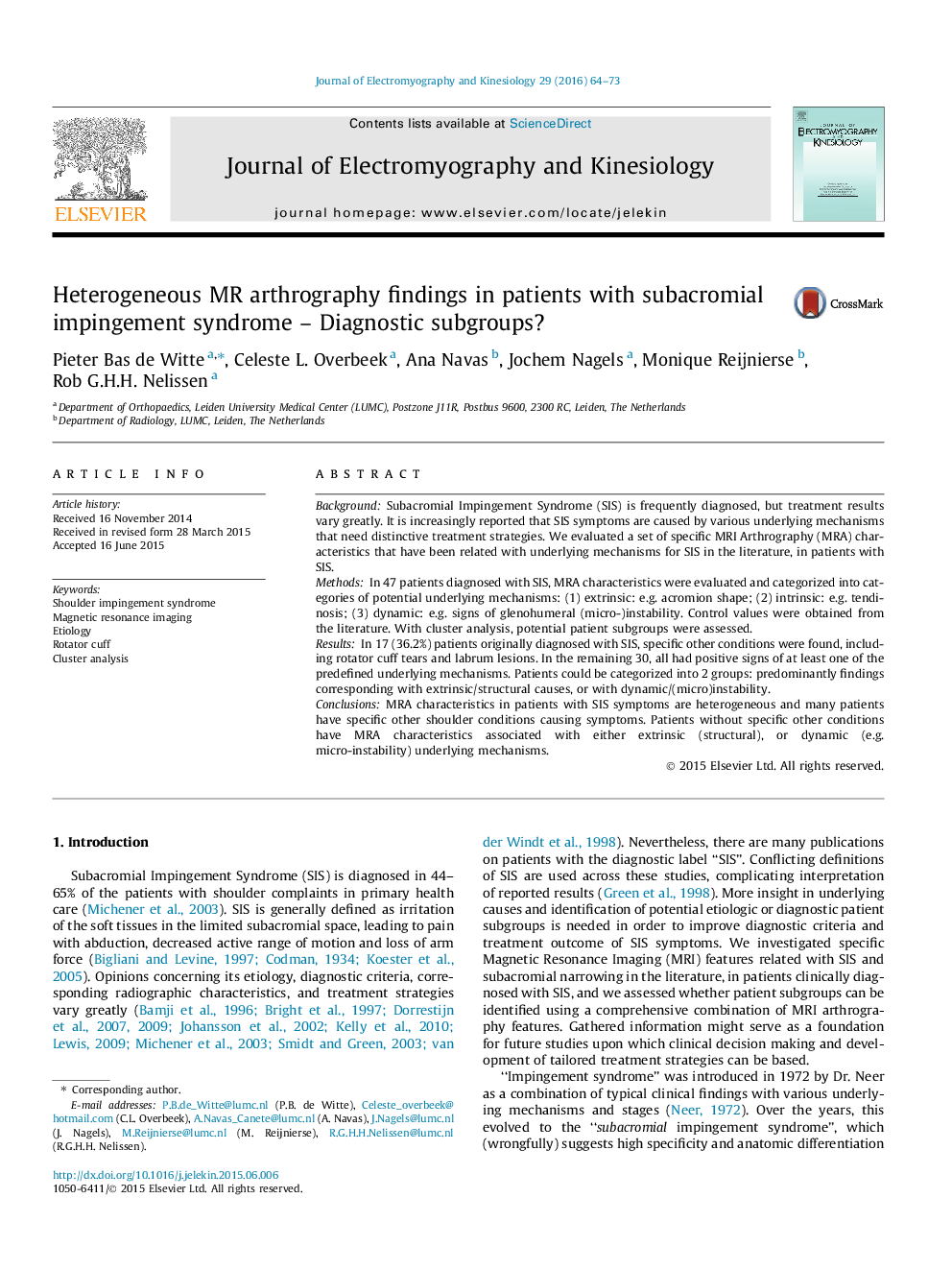| Article ID | Journal | Published Year | Pages | File Type |
|---|---|---|---|---|
| 6210256 | Journal of Electromyography and Kinesiology | 2016 | 10 Pages |
BackgroundSubacromial Impingement Syndrome (SIS) is frequently diagnosed, but treatment results vary greatly. It is increasingly reported that SIS symptoms are caused by various underlying mechanisms that need distinctive treatment strategies. We evaluated a set of specific MRI Arthrography (MRA) characteristics that have been related with underlying mechanisms for SIS in the literature, in patients with SIS.MethodsIn 47 patients diagnosed with SIS, MRA characteristics were evaluated and categorized into categories of potential underlying mechanisms: (1) extrinsic: e.g. acromion shape; (2) intrinsic: e.g. tendinosis; (3) dynamic: e.g. signs of glenohumeral (micro-)instability. Control values were obtained from the literature. With cluster analysis, potential patient subgroups were assessed.ResultsIn 17 (36.2%) patients originally diagnosed with SIS, specific other conditions were found, including rotator cuff tears and labrum lesions. In the remaining 30, all had positive signs of at least one of the predefined underlying mechanisms. Patients could be categorized into 2 groups: predominantly findings corresponding with extrinsic/structural causes, or with dynamic/(micro)instability.ConclusionsMRA characteristics in patients with SIS symptoms are heterogeneous and many patients have specific other shoulder conditions causing symptoms. Patients without specific other conditions have MRA characteristics associated with either extrinsic (structural), or dynamic (e.g. micro-instability) underlying mechanisms.
